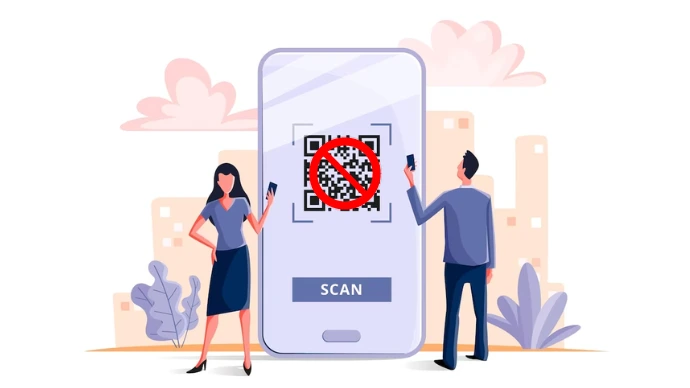QR Code not working?
This is one thing that you wouldn’t want to face, right?
In today’s modern world, QR Codes are present everywhere. They’re used in domains such as marketing, transportation, payments, and more.
However, QR Codes occasionally fail, frustrating users.
Typically, there are three primary factors that can cause a QR Code to malfunction:
- Issues with the physical medium: This refers to problems related to how the QR Code is printed or displayed.
Factors such as poor print quality, distortion, or obstructions can hinder successful scanning.
- Problems with the encoded data: If there are errors or inconsistencies in the encoded data, it can prevent proper interpretation by scanning devices.
- Problems with the destination website: If the QR Code contains a weblink that users are taken to, any issues with the website itself, can impede the desired outcome
Related : How To Make QR Code For App Links
Let’s explore each of these factors in more detail as to why a QR Code may fail to function.
In this blog, we’ll explore why QR Codes may fail and how to fix the issue.
A. Reasons for QR Code not working
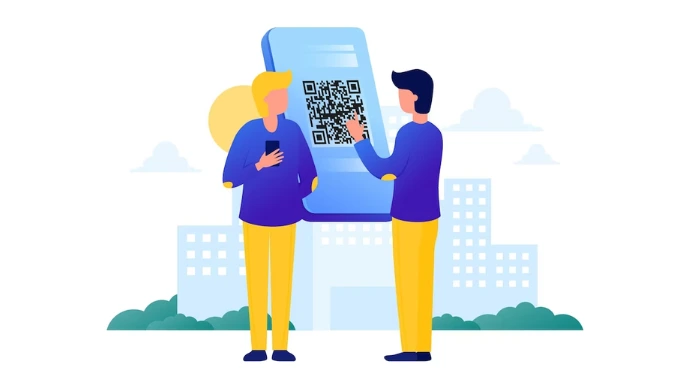
To host successful QR Code campaigns, it’s crucial to master the art of creating QR Codes using online generators.
By avoiding common pitfalls, you can maximize the effectiveness of your campaigns.
Let’s now examine the reasons behind a QR Code not working.
1. Blurry QR Code
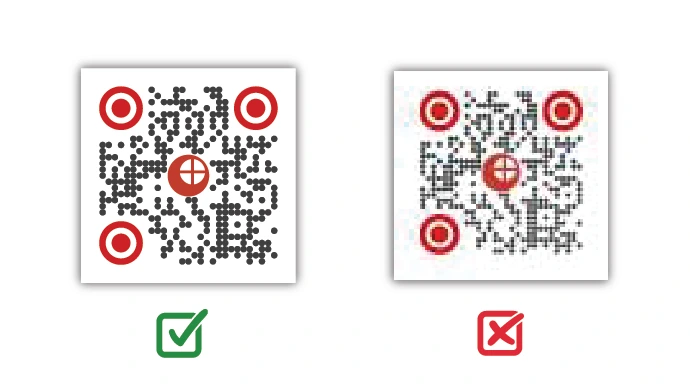
To scan QR Codes effortlessly, create high-quality images with sharp and clear resolution.
This ensures easy detection of borders and content, increasing the chances of successful scanning.
2. Cluttered QR Code
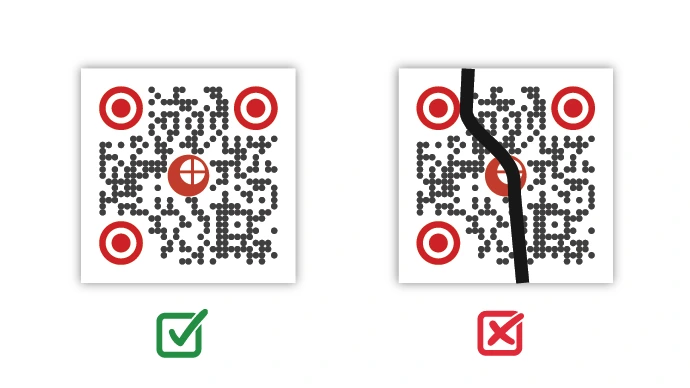
Have you noticed QR Codes that are just too cluttered (or untidy) to look at?
If your QR Code looks the same, its scannability might get affected.
To avoid this issue, it’s important to determine whether you need a Static or Dynamic QR Code.
Static Codes store data directly in them. And for the uninitiated, data is stored in the rows and columns that run throughout the matrix enclosed by the three large squares (eyes).
Adding more data to a static QR Code increases these rows and columns due to which the QR Code becomes denser.
That’s why it’s recommended to create dynamic QR Codes.
They don’t store data directly but include a short URL generated by you QR Code service provider.
That means even if you add pages of content, your QR code will only contain the redirecting URL (which will not clutter it). This URL will then take the end-users to the required content.
Readability and appropriate size are essential factors to consider from multiple perspectives.
3. Low contrast with the background color
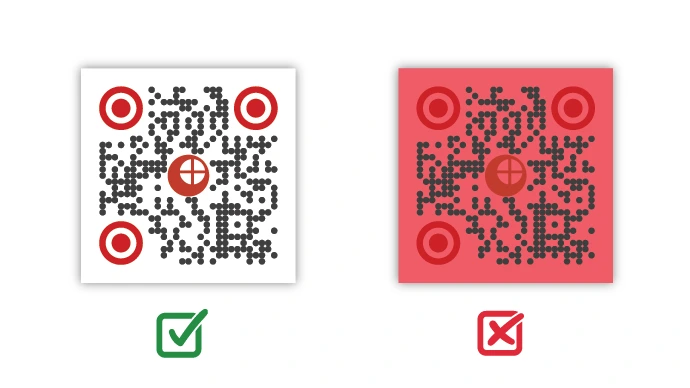
Ensuring sufficient contrast between the background and QR Code colors is crucial for quick and accurate scanning.
Avoid using similar light or dark colors that blend together. This can significantly slow down or even prevent successful scanning.
For instance, light colors like yellow and pastel shades are not suitable for scanning purposes. It’s best to opt for darker colors and white backgrounds to enhance readability.
While you can get creative with color customization in your QR Code, remember not to compromise on contrast.
Advanced QR Code generators offer customization options beyond monochromatic codes.
Always keep in mind that it’s the best to have a dark colored QR Code against a light-colored backdrop.
This will greatly help you in eliminating the problem of a QR Code not working.
Also, if you don’t have the bandwith to look after the technical details of the website, you may use outsource the website designing.
4. Inverted colors of QR Code
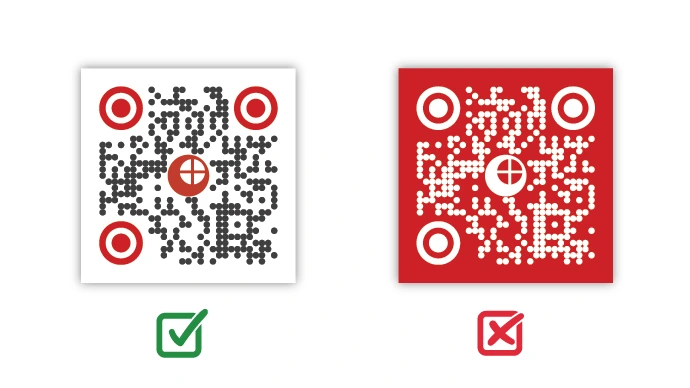
Remember, when creating a QR Code, prioritize having a darker foreground color than the background.
QR Code scanners rely on a clear contrast between the rwo, preferably with the foreground being darker.
Failing to do so can cause scanning issues, rendering even a great design ineffective.
5. QR Code’s size
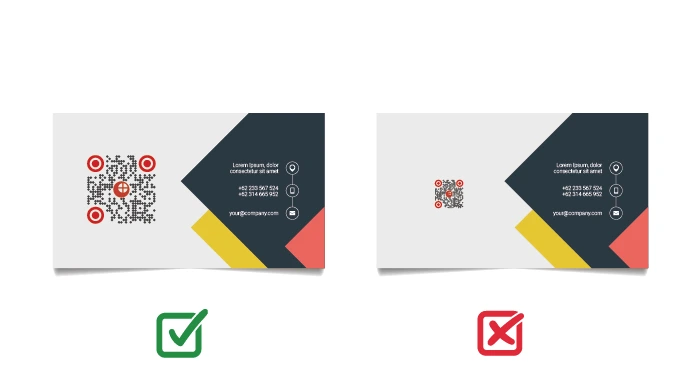
The size of a QR Code is crucial for both its readability and functionality.
The minimum recommended size for a QR Code is 2×2 inches.
Besides that, based on the scanning distance, here’s how you can calculate the ideal size of the QR Code:
Scanning distance / QR Code size = 10
To ensure effective usage, please refer to the QR Code printing guidelines.
If the QR Code is too small and placed in a corner, most users may not even notice it.
Generate a QR Code For Your Unique Case
START TODAY!
6. QR Code’s placement
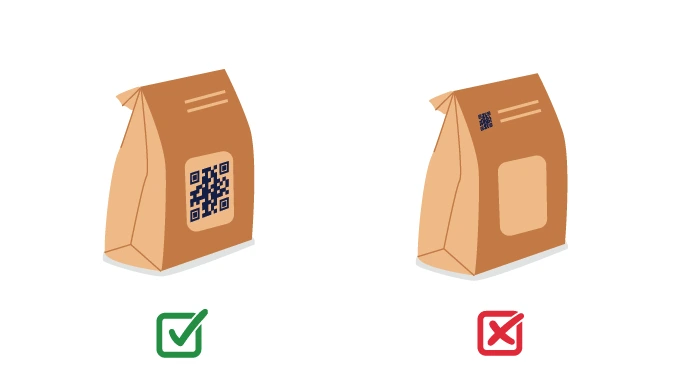
For QR Codes to fulfill their purpose, it is essential that they do not go unnoticed.
Ensure proper placement of your QR Codes to ensure easy visibility for your target audience.
Always position your QR Code in an appropriate area, taking care to prevent it from being overlooked.
Opt for an eye-level placement to attract the attention of scanners directly to the QR Code.
Additionally, remember to incorporate a call-to-action within the frame of your QR Code.
7. Over customization of the QR Code
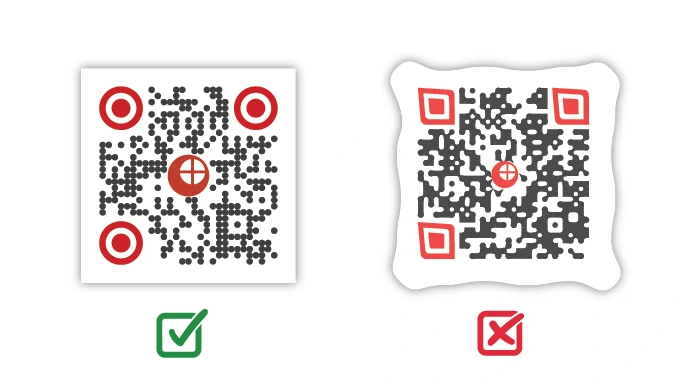
To make your brand distinct, achieve campaign goals, and enhance return on investment (ROI), customization is necessary.
However, it is important to avoid excessive customization.
Simple customization options involve:
- Incorporating a logo
- Customizing the QR Code’s colors
- Adding a background image.
Over customization refers to making extensive modifications that render the QR Code unrecognizable.
This could include using an
- Exaggerated background image
- Significantly altering the data pattern
- Employing colors from a narrow spectrum, or
- Incorporating a lengthy and illegible URL
8. Expired QR Code
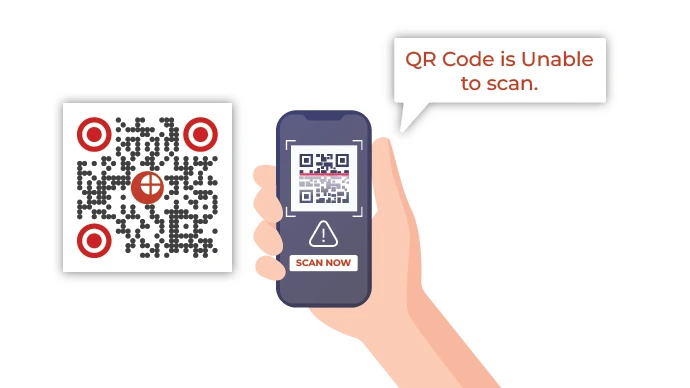
Relying on a low-quality, free best QR Code generator to create your QR Codes can result in codes that expire without your knowledge.
This can lead to users scanning and accessing incorrect information unknowingly.
Additionally, certain generators may have scan limitations. It makes your QR Code unscannable once the limit is reached.
It is recommended to regularly test your QR Codes to ensure they are functioning correctly. Or you can pick a suitable QR code as per your requirements based on this detailed comparison sheet.
9. Faulty link
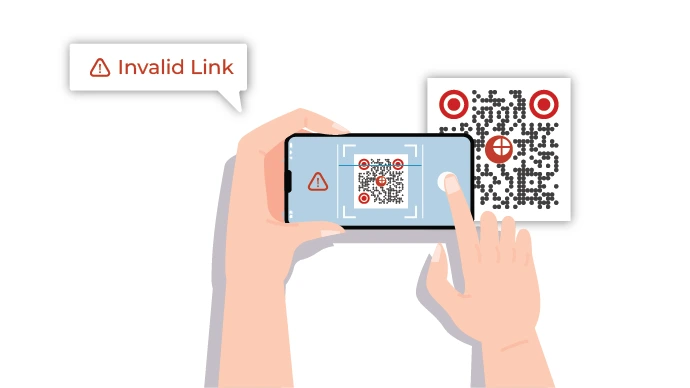
If a QR Code is not functioning, it may be due to a faulty link embedded in it.
To resolve this issue, consider the following steps:
- Verify that the QR Code has been generated and printed accurately
- Ensure that the URL or content associated with the QR Code is both valid and active
- Manually enter the URL or perform a search on your device to directly access the intended content
- Contact the issuer or creator of the QR Code to report the problem and request a corrected or updated version
By addressing the issue with the faulty link, you can troubleshoot and restore the functionality of the QR Code.
This will help you eliminate the problem of a QR Code not working.
10. QR Code scanning distance
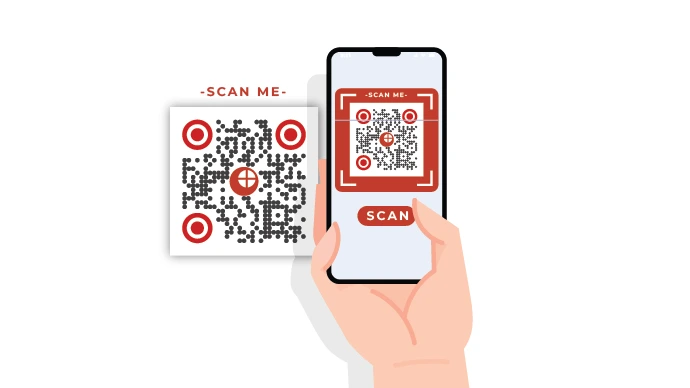
Scanning QR Codes from a distance is challenging.
The code may appear smaller and less defined, making it difficult for the scanning software to interpret accurately.
To improve scanning from a distance
- Approach the QR Code closely
- Align the camera lens properly
- Minimize obstructions that could hinder the camera’s view
These steps enhance image capture and increase the chances of successful scanning.
11. Glare from the sun or other light sources
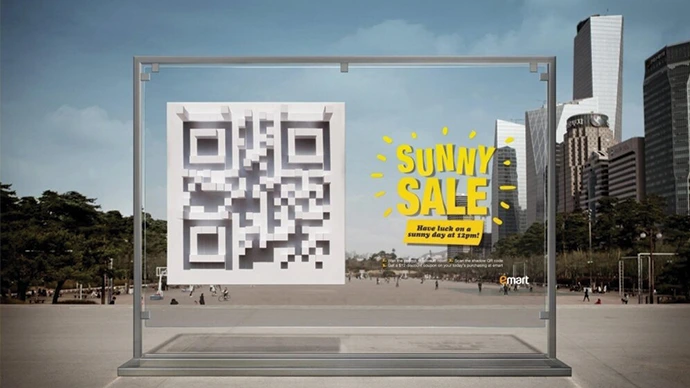
Placing a QR Code on plastic or laminated paper presents another issue. When exposed to direct sunlight, glare can significantly hinder scanning.
Although you can shield the QR Code with your hand to mitigate the glare, not everyone may think to do so.
It is one of the best ways to avoid the problem of a QR Code not working.
12. QR Code in close proximity to text/objects
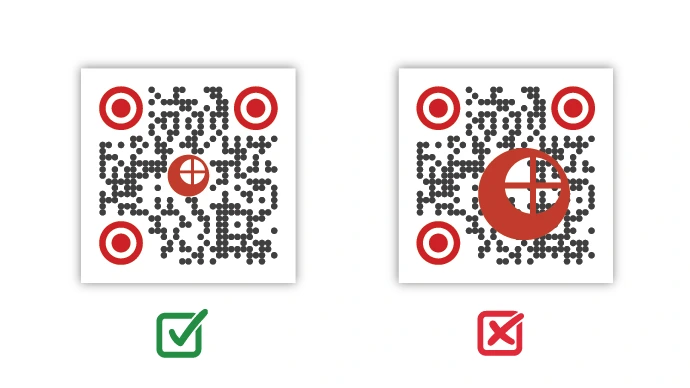
QR Codes are designed for easy recognition by electronic devices.
The three dots in the upper left corners aids in camera alignment for scanning at different angles.
Obstructions or excessive visual clutter make scanning more difficult and impact the code’s readability.
13. Camera not working
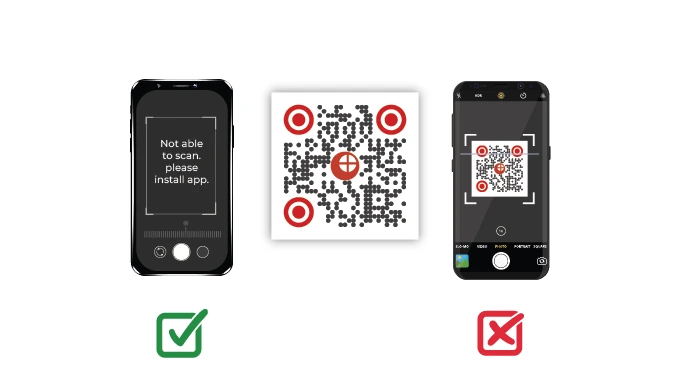
Older phones may require a specific app to scan QR Codes, while newer ones usually have built-in capabilities.
Although opening the camera and pointing it at the code usually works, there are times when it fails. In such cases, using a specialized app can be more reliable.
If an app solves the problem, it’s worth considering other potential issues with the physical medium.
14. Website not working on mobile
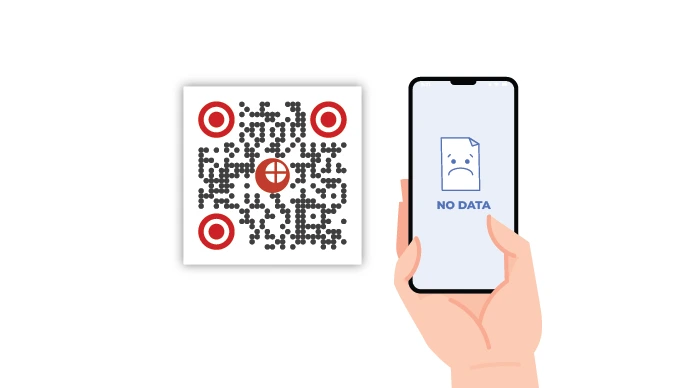
Most users will use their mobile phones to scan the QR Code.
So it is essential that the landing page or the web design is optimized according to the mobile devices and their operating systems.
This will help in overcoming the problem of a QR Code not working.
15. QR Code is dirty or damaged
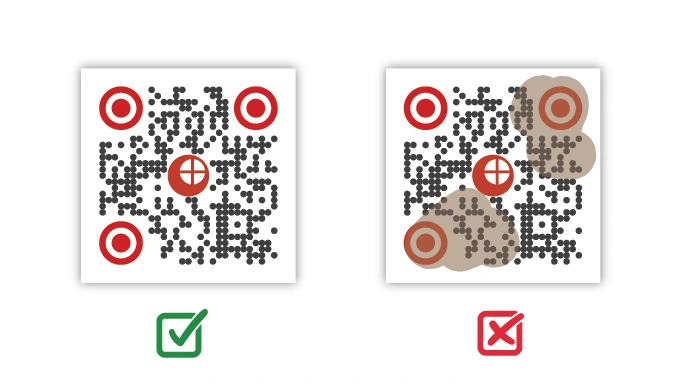
Printing a code on plain paper and exposing it to the elements results in a short lifespan.
Even when kept indoors, the code’s longevity is limited, especially considering factors like handling and movement.
Laminating or using plastic protection may delay wear and tear. But outdoor exposure can still degrade the QR Code over time.
For instance, lamination may not prevent water seepage, while plastic can fade, peel, and crack under various conditions.
16. User doing something wrong
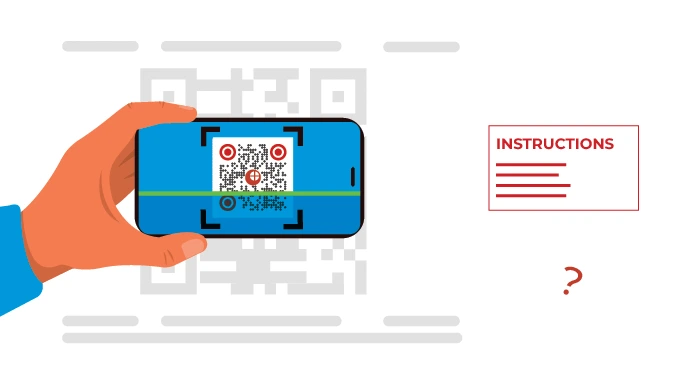
There is an acronym, PIBCAK, meaning “problem is between chair and keyboard.”
It refers to situations where user error or lack of understanding is the cause. Some people may be unfamiliar with the correct way to scan a QR Code or troubleshoot it.
Providing clear scanning instructions, if possible, can be helpful in such cases.
B. Quick fixes for QR Code scanning failure on iPhone
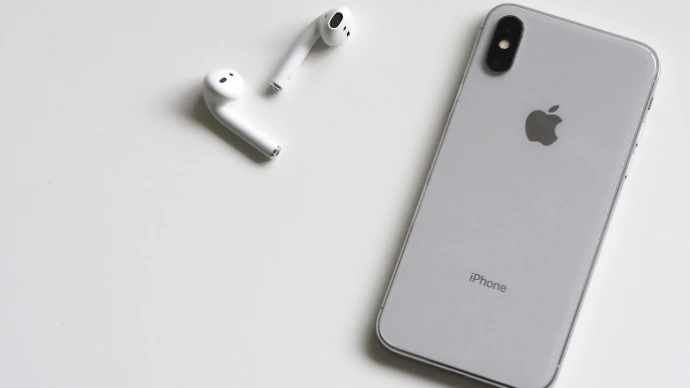
If you’re experiencing difficulties scanning a QR Code on your iPhone, several potential reasons could explain the issue:
1. Your iPhone might not be running iOS 11 or a later version.
Here, you can download a third-party app specifically designed for scanning QR Codes. Or consider updating your iOS to a compatible version.
2. It is essential to have QR Code placed in sufficiently bright environment for the camera to detect and scan it accurately.
3. There might be a smudge or obstruction on your camera lens, affecting the camera’s ability to scan. Make sure to clean the lens to ensure clear visibility
4. Your iPhone is tilted or not held upright. To successfully scan a QR Code with an iPhone, it should be held in a vertical position
5. The distance between your iPhone and the QR Code might be too close or too far
There’s an optimal range for the camera to recognize and scan QR Codes effectively.
It is achieved when the 10:1 ratio is met.
By addressing these potential issues, you can increase the chances of successfully scanning QR Codes with your iPhone, thus eliminating the problem of a QR Code not working.
Generate a QR Code For Your Unique Case
START TODAY!
C. Quick fixes for QR Code scanning failure on Android
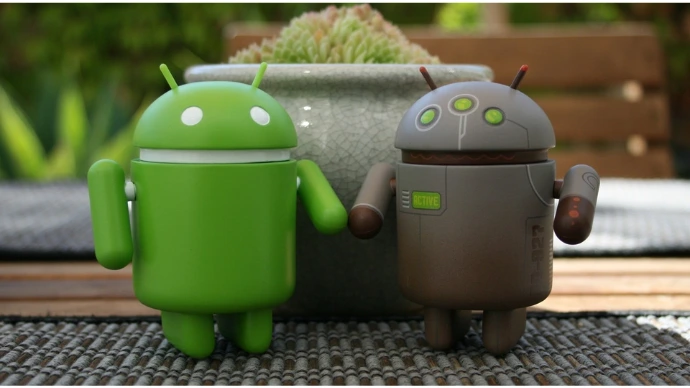
Here are some reasons of a QR Code not working on an Android:
1. Your Android device is running an Android version lower than Android 9
You can download a third-party app specifically designed for scanning QR Codes. Or consider checking for available updates to your Android version
2. The screen brightness may be set too low. Similar to taking a picture, the camera needs sufficient brightness to detect and scan the QR Code accurately
3. Another reason for a QR Code not working could be a smudge or dirt on your camera lens. It obstructs the camera’s ability to scan and read the QR Code. Ensure that the lens is clean for clear visibility.
4. Your device is tilted, angled, or not held upright. QR Codes should be scanned with your phone held vertically to ensure proper recognition. It helps resolve the problem of a QR Code not working.
5. Your Android device may be positioned either too close or too far from the QR Code. Again, referring to the 10:1 ratio, finding the optimal distance is crucial.
If you’re having difficulty determining the correct distance, trial and error can be helpful. Gradually adjust the distance until the QR Code is successfully recognized.
Summing Up
When you come across a QR Code that doesn’t work, it can be frustrating.
But remember, technology isn’t perfect. There are many reasons as to why you might face the problem of QR Code not working.
However, by following the tips in this blog, you can overcome these issues and get the most out of QR Codes.
If you’re still reading, you’ve learned everything about QR Code not working. If you have any questions, let us know in the comments!
